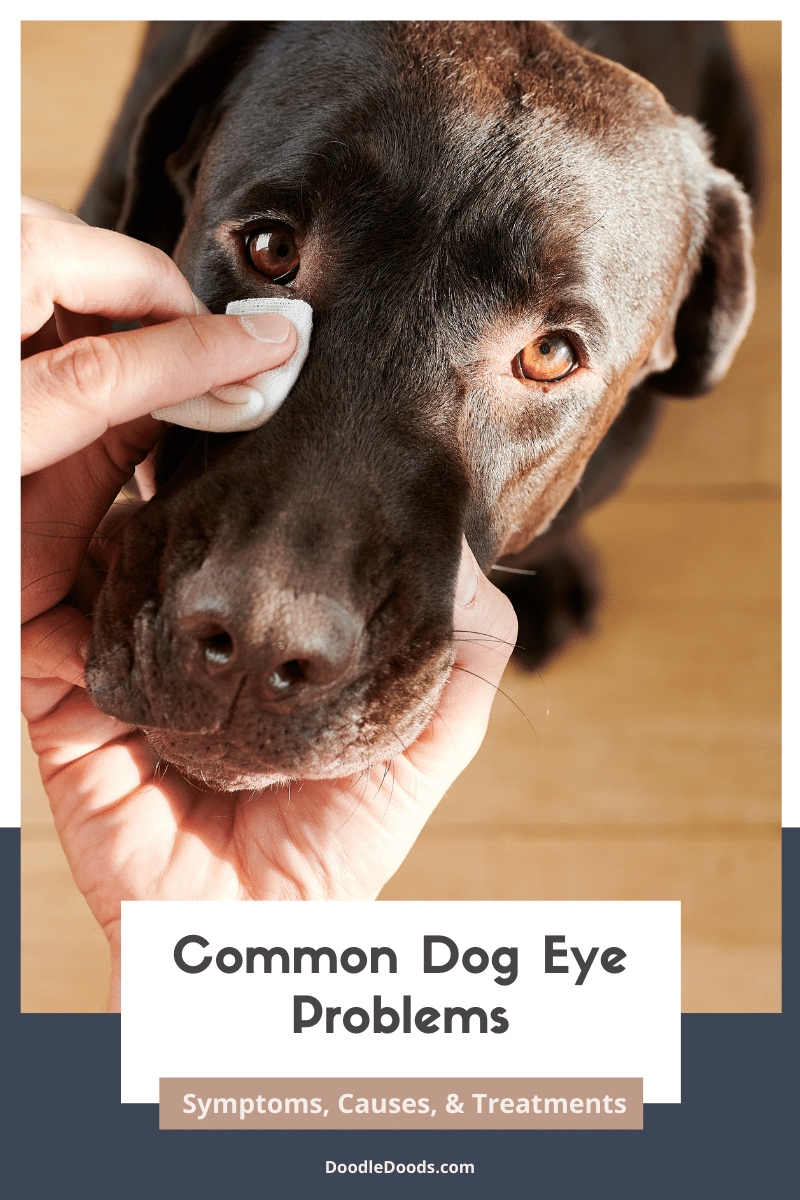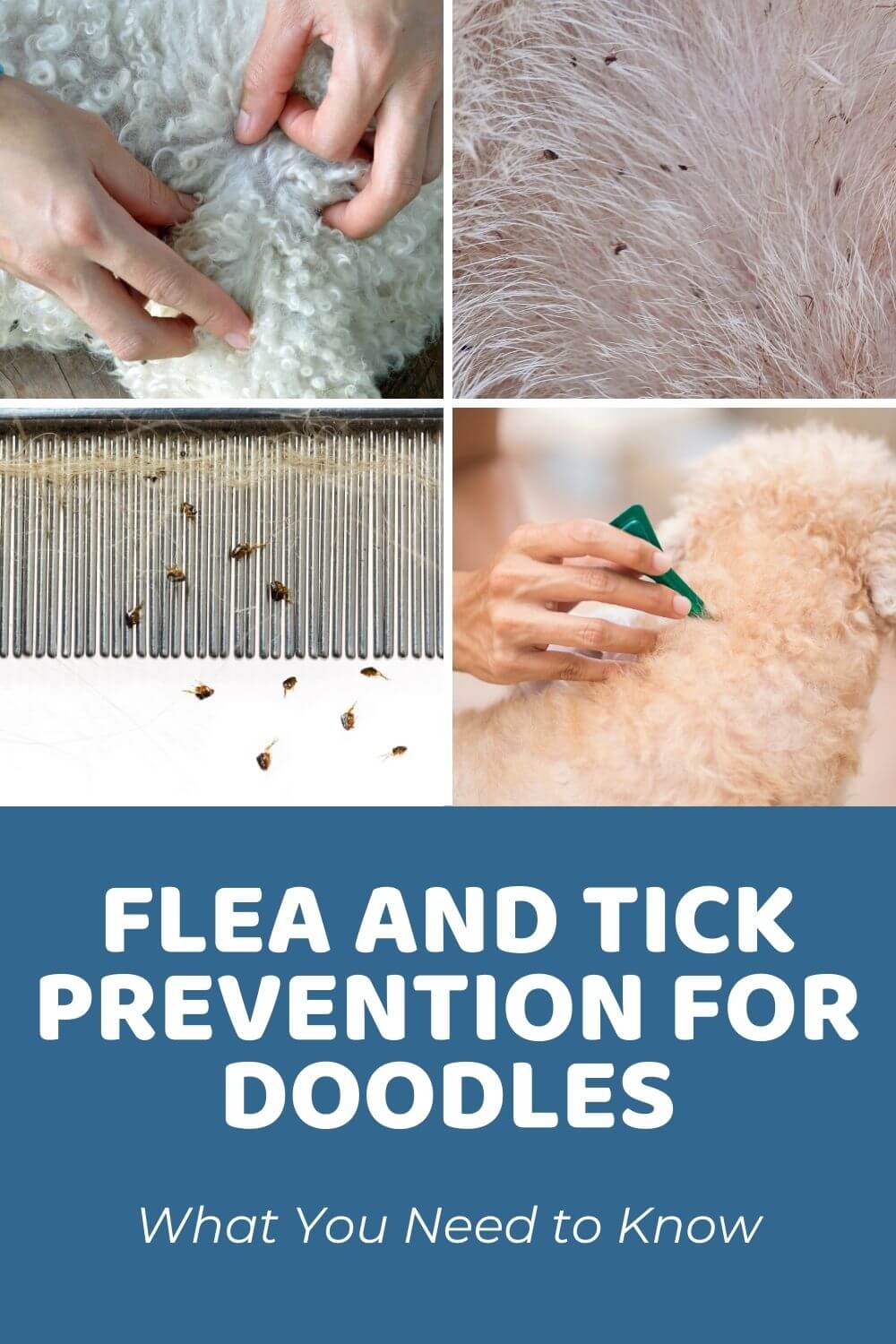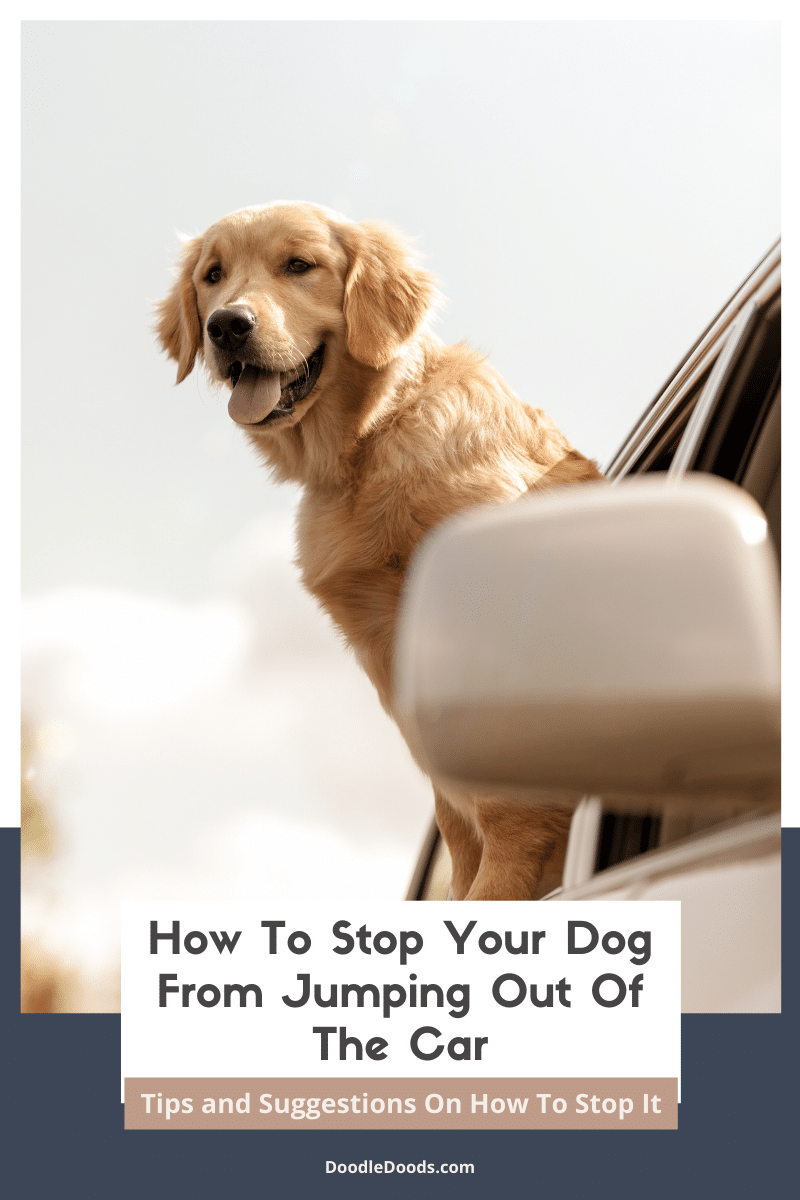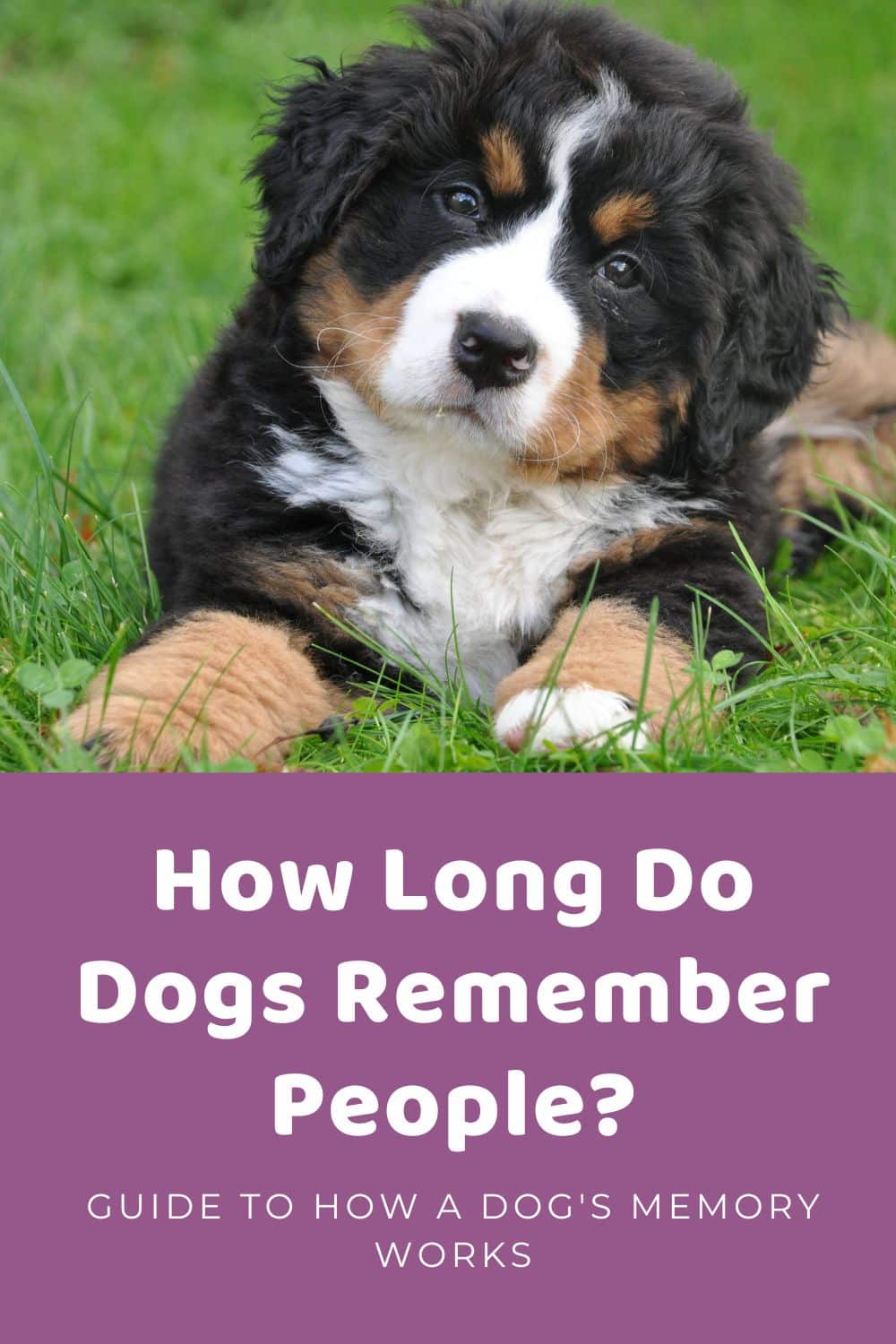While all too much of a people problem, what with hunching over computers and other devices, dog neck pain is less likely to be a thing. That being said, it isn’t completely unheard of, and any dog can experience either neck or back pain at some point in their lives. As responsible dog owners, it falls on us to understand the signs that our pet might be suffering and to figure out how we can put things right.
There are several possible reasons for dog neck pain. In some cases, the cause will be obvious, but generally, it will require expert diagnosis. Happily, there are also plenty of treatment options too. Here we take a look at some of the issues that might underlie dog neck pain in the hopes of helping you to understand what might be up with your pet.
Table of Contents
- The Most Common Causes of Dog Neck Pain
- Symptoms of Dog Neck Pain
- How To Treat Dog Neck Pain
- Recovery Training For Dog Neck Pain
- Frequently Asked Questions About Dog Neck Pain
- Final Thoughts
The Most Common Causes of Dog Neck Pain
The neck or ‘cervical spine’ of your dog comprises a series of small bones that are connected by ligaments and separated by thin cartilage plates that are called discs. The key purpose of the neck is to support the head and protect the spinal cord. While a dog’s neck can withstand a fair amount of stress, far more than our much less muscular ones, injury is still possible. Beyond that, certain heritable conditions and degenerative diseases make this part of your pup’s body more vulnerable than it otherwise might be.
Here we’ll outline some of the more often-seen issues that can cause dog neck pain:
Soft Tissue Trauma To The Area
Obviously, one of the leading causes of dog neck pain is injury. As you can imagine, if you’ve ever watched your pup dive head first to the ground to get a ball or try to pull you off your feet on their leash on the way to the park, this is a fairly standard issue for more active dogs. Neck trauma encompasses everything from repetitive strain from activities such as jumping up and canine agility training to more severe car accidents. Chances are you’ll know when your pet has been injured in this area. You’ll either have witnessed it or be aware of the kind of behaviors they usually engage in that could lead to it.
With a soft-tissue injury, you’ll typically see localized swelling in the neck. This will be the main cause of the pain and stiffness in this area. Depending on the nature of the injury, you might also see some bruising and bleeding, and your pup won’t want to be touched. While the problem may seem fairly mild and like your dog should will be able to simply shake it off, you want to be very careful with any trauma to the neck area. Some of the bones here can be quite small and delicate, and there’s a lot at risk, what with them covering and protecting the spine. You should always get these injuries checked out.
Intervertebral Disc Disease (IVDD)
In certain cases, a forceful impact to the neck or upper body could result in a herniated disc and compression of the spinal cord. This is known as intervertebral disc disease and is the most common spinal problem seen in canines – and sometimes in cats too. It’s usually caused by a breakdown of disc material due to dehydration of the disc, with the sudden trauma exacerbating the problem. This can lead to pain and inflammation in the neck area as well as weakness and some degree of paralysis. Overall, though, IVDD is considered a degenerative condition meaning it is more often seen in older dogs.
However, IVDD can also be heritable, which means it can be found in younger dogs too, but only certain breeds are at risk. Poodles, unfortunately, are numbered among these, as are Dachshunds, Beagles, German Shepherds, Shih Tzus, Bulldogs, Doberman Pinschers, Pekingese, and Lhasa Apsos. That being said, Doodles, as mixed breed dogs, are less prone to heritable conditions as compared with their pedigree parents simply because of their more varied genes. Unless your pup’s ancestry includes one of the above, the chances are much smaller that they will suffer from IVDD as a younger pup.
Cervical Spondomyelopathy
With larger and giant breed dogs, such as the Doberman Pinschers and Great Danes, you have the issue of cervical spondomyelopathy, a condition most vets simply refer to as ‘wobbler syndrome.’ As you might expect from the name, it’s characterized by a unique ‘wobbly’ gait. Both the gait and the neck discomfort, also common to the condition, are caused by one of two things, either the discs between the neck bones pressing on the spinal cord or the neck bones themselves painfully expand. Movement of the head and neck, therefore, can result in repetitive trauma to the spinal cord.
Cervical spondomyelopathy is another genetic condition, and it is reasonably breed-specific. Although there is some evidence of a dietary component to the problem. Specifically, diets high in protein, calcium, and phosphorous, which accelerate growth. As mentioned above, wobblers syndrome is seen more often in larger dogs. With giant breeds, it typically shows up from a young age. Large ones might do a little better, not displaying any symptoms until they reach middle age. Without treatment, the condition can progress to the extent where there is complete paralysis of all four limbs.
Atlantoaxial Luxation
Smaller breeds are sadly also not safe from neck pain. Atlantoaxial luxation is primarily seen in littler dogs, such as Toy Poodles, Miniature Poodles, Yorkshire Terriers, Pomeranians, and Chihuahuas, although larger dogs can also be inflicted. Basically, the first two bones of the neck are the atlas and the axis, and these are held together by ligaments as well as the structure of the bones themselves. Instability between the two bones, caused by issues with the ligaments or with the actual shape of the bones, can cause compression of the spine, and the most common symptom of this is neck pain.
As with other conditions on this list, atlantoaxial luxation can have genetic causes and can also be brought about by trauma to the area. With ligament issues, injury is usually the primary factor, but problems with the shape of the bone, which interfere with how they fit together, are obviously caused by improper development, which is inherited from the parent animals. If the luxation is linked to genetics, it will make itself known early on in your pup’s life. Alongside neck pain, you might see issues with your dog’s mobility, including wobbliness, an inability to stand or move their legs, and strange head tilting.
Cranial Occipital Malformation Syndrome (COMS)
Another condition most common in smaller breeds, especially the Cavalier King Charles Spaniel, but also Chihuahuas, Yorkshire Terriers, Malteses, and Brussels Griffons, is cranial occipital malformation syndrome. In simple terms, this is a congenital disease where the skull is too small for the brain, and so the back part, nearest the neck, is pushed outside of it. A subsequent build-up of spinal fluid puts pressure on the back of the brain and also on the spine, causing pain in this area. A common sign your pup is suffering from COMS is them frequently scratching their face and ears.
Unlike other hereditary conditions, COMS doesn’t typically make itself known until the dog is a few years old. This is due to the time taken for the skull and the brain to fully develop. While there is, unfortunately, no way to actually prevent COMS, early detection makes the syndrome highly treatable through a combination of medication and possibly even surgery in more severe cases. That’s why it’s good to be on the lookout for signs of COMS if you do have a Doodle with a non-Poodle partner that is susceptible to it. Other symptoms include weakness and lack of coordination, and abnormal curving of the spine.
Symptoms of Dog Neck Pain
No matter the cause of the neck pain, there are certain universal signs that can indicate its presence. Dogs that are feeling discomfort in this area will likely adopt a rigid stance with their head held down, their neck completely straight, and their back arched to shift weight down to their back end and away from the painful areas. They will be reluctant to move their head and may even be reluctant to move at all. They also might react badly if you try to touch them anywhere around their head, neck, or shoulders.
You might also notice that your dog is not eating their food. This will likely have less to do with them not having an appetite for it and more to do with the fact that stretching their head down to their bowl hurts them. To test this point, try raising their bowl up so they can easily reach it without straining their neck in any way. If they seem happy enough to eat the food offered, then you can probably conclude that neck pain or stiffness is truly the source of their woes. Likewise, if they aren’t willing to chase a treat in your hand.
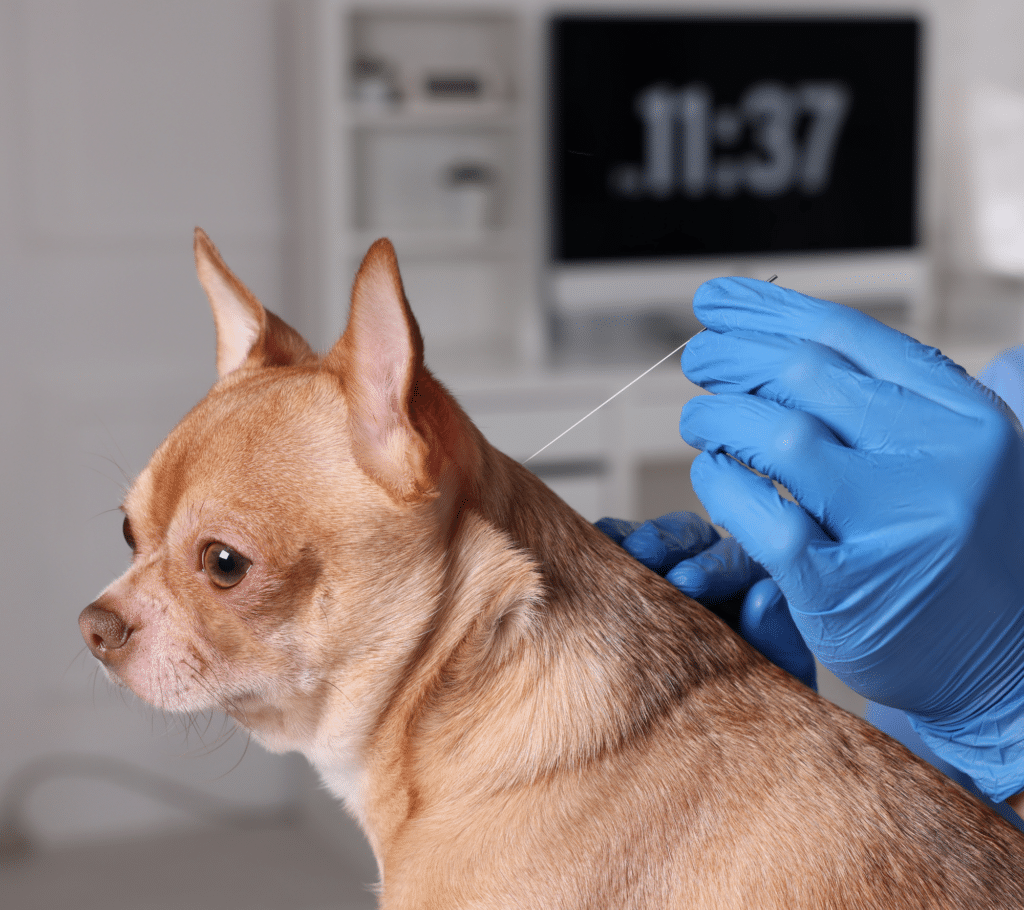
How To Treat Dog Neck Pain
If you suspect that your pet is suffering from neck pain, you should take them to the vet as soon as possible. Be careful how you transport them there, though. You want to try and minimize unnecessary movement and aim to help them keep their back as straight as possible. This can be especially troublesome if you need to lift them into the car. To do this, use one arm to support their front end and one to support their rear and lift them as you would any other heavy, long object – just perhaps with a little more care.
What the vet recommends in terms of treatment will obviously depend on the underlying cause of your pal’s pain. When it comes to injuries, depending on the severity, it might be enough for your pet to simply get a little R&R. In some cases, the vet will supplement this with anti-inflammatory medication. This will reduce the swelling and ease some of their pain while they are healing. While anti-inflammatory pills can be great for neck pain, you should never attempt to give your pup ibuprofen, Tylenol, or any other medications intended only for human use. Always be sure to get a proper prescription from the vet.
If the injury is a little worse than that, the vet might recommend icing it to help bring the inflammation down even faster and even a little physical therapy. We’ll chat about that in just a minute. In truth, many problems linked to neck pain can be treated conservatively with various medications, rest, and rehabilitation. However, in more severe cases, such as with ‘wobbler syndrome,’ for instance, surgeries such as decompression of the spine might be required to sufficiently alleviate the pain and discomfort that your pup is feeling.
Recovery Training For Dog Neck Pain
While rest is the important first step for dealing with just about any kind of neck pain, at a certain point, your vet may recommend a little recovery training to strengthen the muscles here and prevent ongoing problems. These will typically include basic head, neck, and shoulder movements that will stretch out and utilize the muscles they have been resting. For instance, as a starting point, your vet might suggest getting your pup to move their head around by following your hand (a treat or toy makes this easier to achieve). They might also have you manipulate your pet’s joints or give them a little gentle massage.
Alongside this, changes in diet might be necessary to help manage the underlying condition. If your pup is carrying a little too much extra weight, this will put unnecessary strain on their neck and back. Keeping your dog nicely lean, fit, and active will not only avoid this situation, but it will also keep all their muscles in good working order. Plus, certain nutrients found in specific dog foods can be highly beneficial for bone, ligament, and mobility issues, while others are good for helping to reduce inflammation.
Finally, if you are still using a collar-and-leash get-up with your dog, you might want to switch to a harness instead. This is better for dogs that have a tendency to pull as the pressure is spread across the chest and back rather than being concentrated on the more delicate neck area – made even more delicate if they have a condition that affects here.
Frequently Asked Questions About Dog Neck Pain
If your pup’s neck pain is injury related and not quite so serious, they could benefit from a little light massage. Although, you’ll not want to get on this right away as the area will be inflamed and far more tender than usual. Once they are well on the road to recovery, though, you can use massage to relax the area and boost circulation for better healing.
As with us when we have an injury, icing your dog’s mild neck injury can be great for reducing swelling and painful inflammation and helping them to feel better faster. Be careful to place a damp towel between the ice pack and your dog’s skin to prevent ice burn. Apply the ice for 20 minutes at a time, two to four times per day, for best results.
If your dog is dealing with neck pain, the vet will usually prescribe them anti-inflammatory medications to help reduce swelling, which will be putting uncomfortable pressure on the area, alongside pain medication. Always give your pup medication only on the advice of a vet, and never give them anything not intended for canine use, no matter how mild it is.
Final Thoughts
Dog neck pain is a symptom with many possible causal factors ranging from less severe, like sprains, strains, and other injuries, right through to congenital defects, such as abnormalities with the bone formation. If you suspect your pet is having problems in this area, you should get them to the vet just as quickly as you can. Injuries in the neck can potentially be very serious without the right kind of treatment, and underlying conditions benefit from being diagnosed and treated as early as possible. Hopefully, the information provided in this article has given you an idea of what to look out for when it comes to dog neck pain so you can be sure you’ll know just what to do if the issue ever arises for you.
Want to Learn
DIY Doodle Grooming?
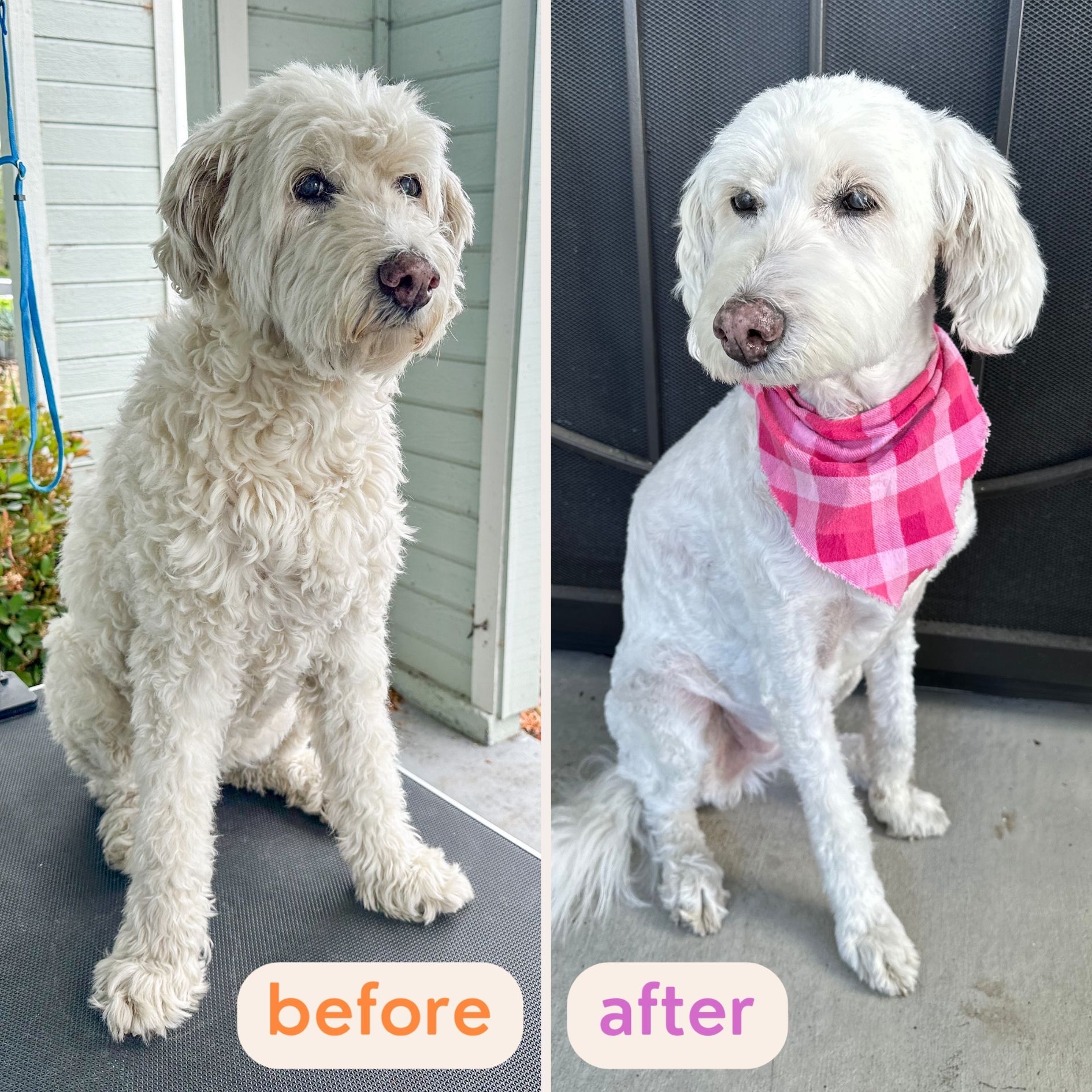
 “Every concern and question I had now has clear, practical solutions.” – Paula D.
“Every concern and question I had now has clear, practical solutions.” – Paula D.
 “These lessons have provided tremendous amounts of information.” – Steve B.
“These lessons have provided tremendous amounts of information.” – Steve B.
 “Buy the course and complain about how easy it is!” – Chris S.
“Buy the course and complain about how easy it is!” – Chris S.
Learn How To Groom Your Doodle At Home…
Safely…And Without Confusion:


